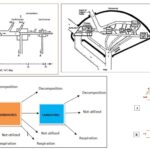Why does the Beer-Lambert Law deviate at higher concentrations?
Why does the Beer-Lambert Law deviate at higher concentrations?
Please login to submit an answer.
The Beer-Lambert Law typically assumes a linear relationship between absorbance and concentration, but at higher concentrations, this relationship becomes non-linear due to various factors. First, electrostatic interactions between molecules in the solution can distort the absorption spectra, as the solute molecules are closer together. Second, molecular aggregation occurs, where solute molecules interact and form clusters, changing the absorption characteristics of the solution. Third, the refractive index of the solution increases with concentration, affecting how light propagates through the solution, and this can lead to deviations from the expected behavior. Additionally, stray radiation, or light that is not absorbed by the sample but still reaches the detector, can have a more significant impact at higher concentrations, distorting the measurement of absorbance. Finally, at higher concentrations, light scattering can become more prominent, especially if the particles are large or the solution is turbid, which further contributes to the non-linearity observed in the Beer-Lambert Law.
- Share on Facebook
- Share on Twitter
- Share on LinkedIn
Helpful: 0%




